The name of this wonderful flower received due to its ability to melt. If you translate the word Ipomea from the Greek language, then it will be "similar to the worm" - the flower stem grows, blaming around everything that is near. Therefore, most often the sipomy is planted along the fences and walls of houses, cottages. It creates a shadow near the arbors and the veranda.
Content
Description of culture
America is considered the birthplace of a chic flower - IPOMEY. Its landing and care does not require special skills. The culture is unpretentious, can grow in any soil, but more prefers solar and open bright areas protected from drafts. This multi-year flower grows as a unelinestone in the middle stripes with a cooler climate, since the active growth of the plant is stopped at temperatures below 10 ° C. The leaves resemble the heart shape, and the flowers in the form of a funnel have a large number of shades.
Ipomea refers to the most numerous family of a family of curly crops, which has more than 500 varieties and species. And only 25 of them are actively grown by lovers of decorative plants.
The most common genius of the Ipomey can be considered the genus Ipomoea Batatas (Batata). More popular varieties of this kind include:
- IPOMEYA CAIRSKAYA (IPMOEA CAIRICA) - Due to the thick shoots and a large number of lilac flowers, it is capable of turning very quickly into the most real lush carpet.
- Heavenly Blue Ipomea (iPomoea Heavenly Blue) - the British call this flower "Morning Glory" (nice morning) for his ability to bloom earlier all other flowers. Heavenly blue pedals throughout the day follow their heads behind the sun, and all the time turn to it. I am pleased with your beauty, starting in July and to the most frosts.
- Ipomeya Purple (iPomea Purpurea) - has the longest stem, more than 8 m. Purple sicky flowers are large, up to 7 cm in diameter, can have shades pink and white, purple, red and purple.
- IPOMEY NIL (IPomoea Nil) - has 3 meter stems with flowers of pink, red, dark blue, purple, celestial blue and even lavender color.
Also to the popular kind of culture, which is glad to grow gardeners, can be attributed to the Kaloniction Ipome. The most common kinds are:
- Ipomay Lunno-flowering - has shoots more than 6 m long and stems up to 3 m in height. White shade flowers are distinguished by a specific almond spherical smell and reach 12 cm in diameter. It can multiply with tanks (umpnits), which are simply deepening in the soil, after which they quickly take root.
- The tricolor Ipomeya - grows up to 4-5 m in height. Flowers grow with beams and painted immediately in three colors. The most beautiful variety is the Red Blue Ipomoya.
The breeders of the whole world do not stop at the result and constantly removal new hybrid varieties of ipomes, which please the eyes with a variety of colors and forms.
Landing and care
Ipomea is absolutely unpretentious, so its cultivation will not give you special troubles. In the hot sunny days, the sizes blooms are blooming in the early morning, and after noon they are already starting to close. But in cloudy weather, IPOMEYA makes it possible to enjoy its beauty throughout the day. This suggests that the flower does not tolerate the active Sun and tries to hide from him.
Culture can grow on different soils, but some preferences still have:
- It grows well on the lungs, loose lime soils.
- In the fall, the land planned by landing of the ipomey is actively equipped with potash and phosphate mixtures, after which it is well drunk.
- In the spring, the soil can be fertilized by organic fertilizers - chicken litter, wood ash and dung alive. After that, it is necessary to pour soil and move it.
- IPOMEYA without any problems neighboring any cultures. But do not land the binds near the plants, which are most often exposed to attacks.
Methods of reproduction of IPOMEY
The plant can multiply in several ways:
- self-resin - the plant drops its seeds that winter in the soil and early spring make their way from the ground;
- seeds - early spring collected or purchased seeds in specialized stores are planted into the ground;
- seedy - seeds are germinated and then planted into the ground;
- cuttings - individual types of sicks multiply only in this way.
If everything is clear with the self-resistant, then the rest of the cultivation methods need to be considered in more detail.
Growing from seeds
This is one of the most common ways used in the southern regions that the IPOMEY has multiplied. The cultivation of seeds start somewhere in late May, when the earth warms up. But first the seeds are recommended to prepare correctly:
- it is necessary to soak seeds per day in water 25-30 ° C so that they are well swelling;
- if the seeds are badly scattered, they must be pierced with a needle and put into the water again. So they will raise moisture faster.
After the seeds are scattered, they can begin to plant in an outdoor ground:
- Make small recesses in the ground at a distance of 20 cm from each other.
- Even if you already supported the soil, it will not hurt to add some more organic organic directly into the wells. Use a bird litter or wood ash.
- Lower to each well to 1-2 pieces. Seeds and pour them off their land.
- After landing the soil, it is necessary to pour well.
- Do not forget that the plant goes, and for this he needs a support, otherwise it will begin to step on the ground. As a support, any items - cuttings, metal or wooden sticks can be used. Well, if you sit down a fence under the fence or a gazebo, the plant will find himself, for which he cares.
Growing sediate
This method of cultivation is suitable for the middle strip of Russia. For these latitudes, it is not recommended to plant seeds directly into the ground for the reason that they will not have time to germinate in those conditions, and if they germinate, they will bloom too late. You just do not have time to enjoy the beauty of this luxurious flower.
In order to grow seedlings of ipomey, the seeds also need to be prepared. Only in this case the wake-up seeds are not planted in open soil, but in small pots or cups. Please note that the growing Earth seedlings must be well fertilized.
In order to be able to land in the soil in the ground in early May, its cultivation can be started at the end of March or in early April:
- Prepare the pots or cups and pour the soil in them.
- Lower 1-3 pcs in each container. Seeds at a depth of 3-5 cm.
- Pour the Earth.
- If you planted the seeds into large boxes, then when the seeds are scored and small sprouts will be shown on the surface, install the support, so that the seedlings are not confused with each other.
- Seeding seeds are preferably at a temperature not lower than + 18 ° C in a bright room. It can be a windowsill or balcony.
- Under favorable conditions, the first shoots will appear no later than 10 days.
- Regularly water the seedlings with water room temperature, but do not overdo it so that it does not deteriorate.
- As the seedlings grows it, it must be transferred to more spacious pots. If you grow seedlings in large boxes, where it will be spacious, the transplant will not need.
- If you want the IPOMEY to give a lot of lateral shoots, you can quarrel seedlings.
- After 2-3 weeks, when seedling reaches 20-25 cm in height, it can be planted into open ground.
Landing
Somewhere at the end of May or in early June, when the soil warms well, you can start to plant seedlings in open soil:
- Ipomey's roots are very gentle, so it is necessary to transplant the plant very carefully. Make it in a translated way.
- Make a deepening in a predetermined soil at a distance of at least 20 cm from each other.
- Moisten the land in which the seedlings are growing so that you have the opportunity to more accurately remove the plant.
- When removing seedlings from the pots, leave on the roots of a lump of the earth, then the root will be less likely to be damaged.
- Lower every Lian in the well and sprinkle its land.
- Immediately prepare a support for the flower so that it was around that it is.
It is worth noting that the Morning Glory does not like frequent transplant, so we can recommend the cultivation of seedlings initially large and spacious drawers. Then you have the chance to save as many plants as possible.
You can arrange for a small seedling teplichke. For this you need the box itself, which will continue to grow seedlings, a piece of glass or polyethylene. Once you sow the seeds into the soil, cover it with glass or polyethylene. Regularly ventilate the seedlings and moisten the soil, preventing it drying out. In 10-12 days when the seedling will rise, a shelter can be removed, it is no longer needed. Do not forget to install support for rostochku.
Care Morning Glory
Ipomoea many years after planting requires proper self-care:
- The most important condition under which the Morning Glory will delight you with its beauty - a reliable support. If a flower is growing near the house or fence, make sure that it lacked support. If necessary, replace it with a higher and more durable.
- Regularly water the soil in which the growing morning glory. But, as mentioned above, do not fill the roots of much that they do not rot, otherwise the plant will die.
- Feed the culture of nitrogenous fertilizers. They will promote the active growth of the flowers. But remember that nitrogen promotes active growth of not only flowers, but also green, but it is very attracted pests. Choose a middle ground, that all was well.
- Periodically loose earth around the flower. This will enrich the soil with oxygen and protects the plant from waterlogging.
- Remove obsolete flowers with vines, so they do not interfere with the new to blossom. Can collect from the dried flower seeds, they will serve you for the next season.
- And, of course, you must regularly deal with pests that can attack Ipomoea.
What grows Morning Glory after a good fit and proper care, you can see in the photo.
Diseases and pests
A number of different pests are just waiting to hit the plant, causing as a result of dangerous diseases. Unfortunately, not the exception, and Morning Glory. The most dangerous pest for the flower can be:
- Aphid. If you have noticed that the leaves of the plant are covered with yellow spots, then you can say for sure - the flower attacks the wave. This pest makes small punctures in the foliage of the plant and sucks the juice from it, infecting Lian by Medvyany dew. The trouble is also dangerous by the fact that she attracts other insects that do not eat it, as it is believed, but on the contrary, they protect and transfer from one plant to another. In order to prevent the death of the Liana, it is necessary to first wash off the water with water from the hose under the high pressure. Then treat the plant with special solutions. In order to prevent the appearance of aphid on the flowers, you can plant the plants next to them, which repel the pest - garlic, onions or the Dalmatian chamomile (do not confuse with an ordinary chamomile, her till loves her very much).
- Cute tick. It is very easy to recognize it. If you see a thin cob on the leaves and flowers is it. Fight with a spider tick is easy. It is enough to rinse it with very cold water.
Fans of the Ipomey should remember that this plant is very poisonous, so you can grow it only outdoors. Do not let go of children and domestic animals. Be carefull! If you do not have a cottage, but you do not want to deny yourself the pleasure of growing at home this luxury flower, put it on the balcony. Gorgeous Ipomea, the care of which will not give you special troubles and problems, will delight you with your beauty to the most frosts.
What should I have landing and care can be viewed on video.

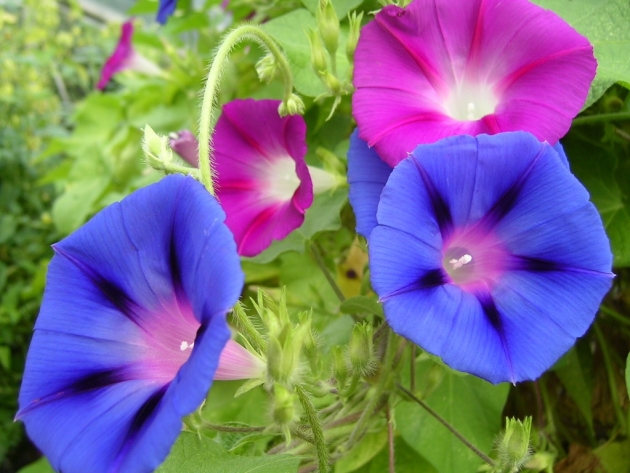
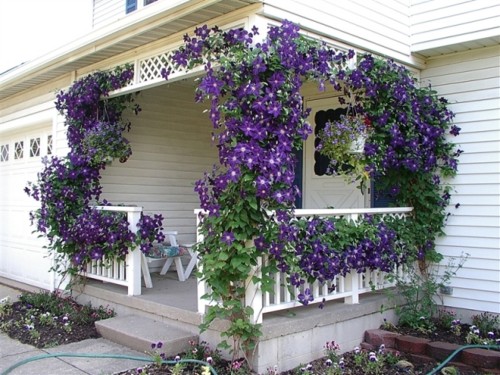
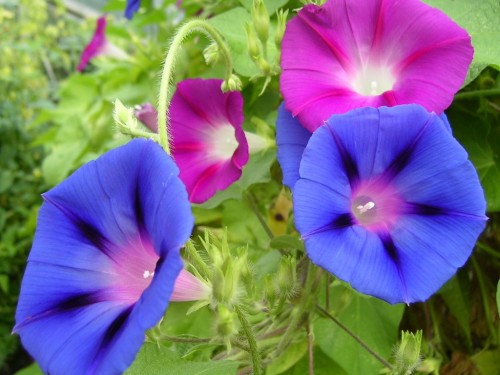
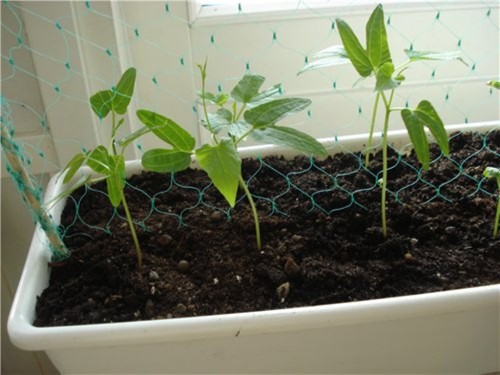
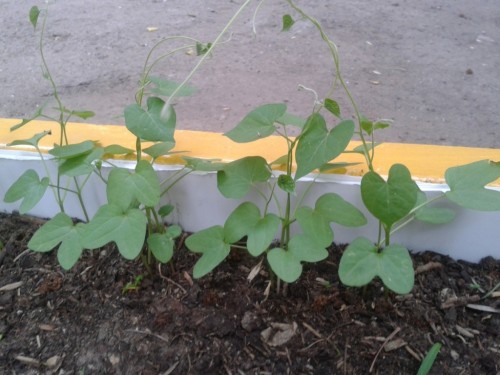
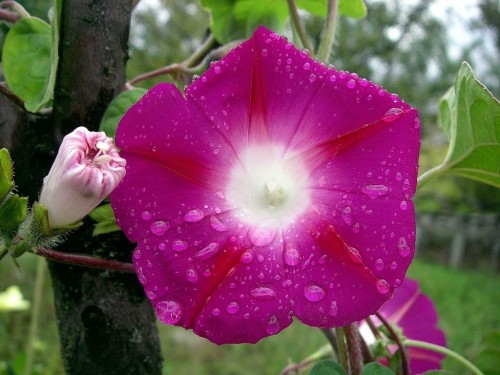
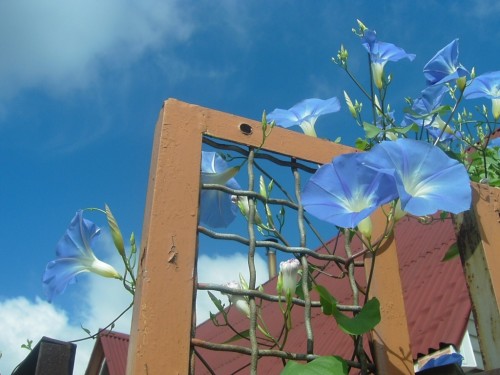
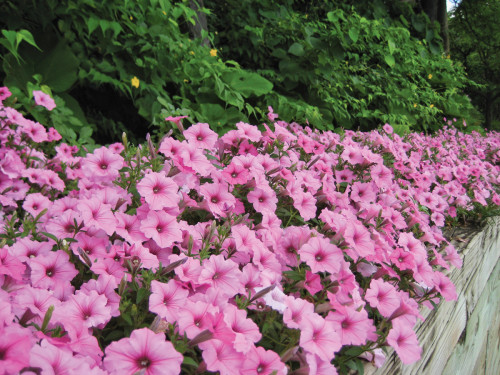
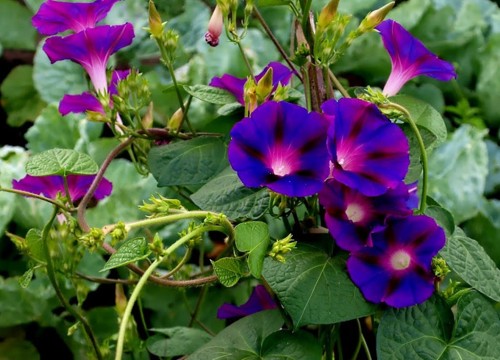





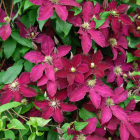
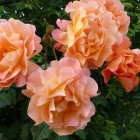

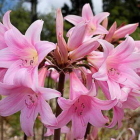
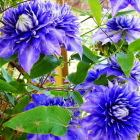
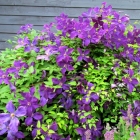
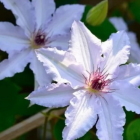
 Start a discussion ...
Start a discussion ...